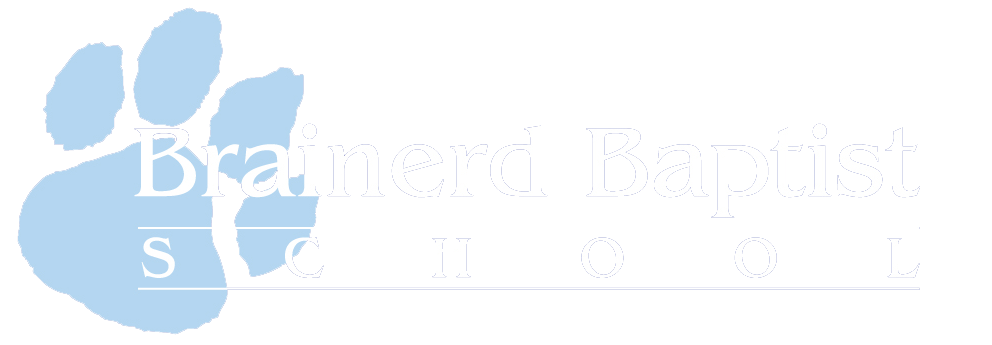Math - Does it Add Up?
In my last post, I shared the results of an exhaustive parent survey that we completed in the fall. I mentioned that we would begin responding to some of the comments that parents shared in the survey. This post is our attempt at answering/explaining questions that were raised about the new math curriculum that was adopted in the Fall of 2022. I have asked Mrs. Merrion to help with this post because she has extensive experience and training in teaching math and in our new curriculum. We are also planning a math night so parents can come in and see the instructional model in action to better understand how math instruction may look different today than it did when they were in elementary school. This time will also provide practical tips on how you can help your child if/when they may need help with math homework.
There were comments in the survey about the new math curriculum that were not accurate. The mindset that drives every decision we make at Brainerd Baptist School is “what is best for students.” Curricular decisions are intentional and involve teachers from every grade level. This group spent considerable time (over 1 year) talking to other schools about programs they were using, reviewing curriculums, as well as talking with our counterparts at middle and high schools in our area to gain information about how math is taught at the next level. That information was then used to make changes to our program that raised the bar on expectations for our students. We understand that growing pains occur when changes like this are made. Students may say, “We don’t like this, or This is too hard” to their parents, and this leads to parents being frustrated. That is natural in childhood, as many children will say that they don’t like eating vegetables or brushing their teeth. That doesn’t mean there isn’t value in those tasks! It is essential to understand that different doesn’t necessarily mean bad or that we have adopted something that goes against our core beliefs on how children learn. Mrs. Merrion does a great job of explaining this below.
Math - Does it All Add Up? by Rebecca Merrion
Many parents, maybe yourself included, are looking at their student’s homework and thinking, “Why are teachers teaching math so differently now? Why aren’t they teaching the standard algorithms? Why aren't they just helping kids get to the answers quickly? Why are they wasting so much time on methods that seem inefficient?”
In addition, some parents have voiced concerns that we are teaching “common core”. I think it is important to understand what Common Core actually means. It is not a curriculum but a set of national standards initiated in 2010 across the United States, which lays out standards for each grade level. Every curriculum is required to cover those standards. In fact, every publisher creates a curriculum that will cover the material needed to hit those standards. The real question is, why did many curriculums start moving away from memorizing algorithms to focusing on understanding with more manipulatives and conceptual strategies? The answer comes down to research.
Decades of studies show that teaching students algorithms and simply having students execute problems does not create flexible, mathematically-minded students who enjoy and succeed in the subject. Instead, it leaves many students feeling like they don’t like math. When they don’t understand why they are doing what they are doing, they are left feeling like it doesn't make sense.
Research shows that if we teach students methods to conceptualize the problem first, they are better equipped to arrive at the right answers and are more able to explain their thinking. They are also more likely to find better ways to solve problems because standard algorithms are not always the most efficient way to solve a problem. Do we still teach them the standard algorithms? Yes, but only after they’ve learned other visual methods that help them conceptualize the concept.
Bridges in Mathematics was created by some of the top mathematicians in the world who incorporated their areas of expertise into different aspects of the curriculum. It specializes in using real-world examples and manipulatives to bring math to life. Students move between different activities throughout the class period to keep them engaged and curious. Each period has a mixture of large group activities; partner work with Problems and Investigations or Work Place games, and independent practice in their Student Books. This mixture of activities allows us to differentiate instruction and build community within the classroom.
A typical day might begin with a Problem String that takes them through a series of problems, moving from easy to more challenging, as students look for patterns and strategies to be as efficient as possible. Then they might be learning a new Work Place game to practice the skills they are learning, or they might be presented with a Problems and Investigation, which is a complex problem to solve with a partner or group. Class usually ends with a Student Book page to complete independently. Some days we have Math Forums, where students are asked in a large group setting to verbalize their thinking and share the strategies they used. Students then weigh which strategies are most efficient and which strategies they like better. No two days are exactly alike, keeping the classroom engaging and fun.
We at BBS are confident our students are getting a top-tier mathematical education with the Bridges Curriculum. We are acutely aware of the challenges and expectations that lie ahead in Middle School and are committed to cultivating students' hearts and minds to thrive!

